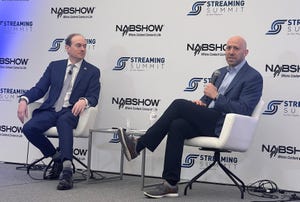It's no longer any secret that MSOs want to mount, power, manage, and rent small cell services to mobile operators, but will 4G providers give up control of these new tiny radios?

NEW YORK -- Future of Cable Business Services -- Will mobile operators cede control of small cells and spectrum if MSOs can more easily deploy these tiny distributed radio networks across lamp posts around the US and rent the connectivity back to them?
It was an important question here at the Light Reading cable business services event on Wednesday.
Here's the cable thinking behind offering "small cells as a service." The MSOs already terminate fiber at lamp posts and buildings in towns and cities and so can provide backhaul to the small cells. Because cable operators typically have better building and licensing rights to install metal boxes on poles and walls than mobile providers, the logic follows that it makes sense for them to install and run the small cells and rent the connectivity back to the wireless carriers. (See TW Cable Eyes Small Cells Too and Comcast Testing Small Cells – Sources.)
"Small-cells-as-a-service is a home run for MSOs," stated Cisco Systems Inc. (Nasdaq: CSCO)'s Todd Nightingale on a show panel. He suggested that mobile operators are set up to run their private macrocell sites, not deploy a distributed network in towns or cities in the US.
The one snag is the question of which company owns the small cell and the associated spectrum over which the wireless data is broadcast.
"From a cable MSO perspective, we would want to own it," said Jitesh Bhayani, VP of marketing for business services at Time Warner Cable Inc. (NYSE: TWC). He added, however, that this is something that the MSOs are talking to mobile operators about at present.
Whatever happens, cable operators are now gearing up to at least test this new service model. "There are several trials that are being lined up right now," said Bhayani.
All the panelists agreed that the major MSOs are now eyeing this model. Cisco's Nightingale further suggested that the eventual goal is "coverage and capacity as a service," tying together wholesale small cell service and the tens of thousands of WiFi hotspots that the industry has been deploying.
In his keynote earlier in the day, Phil Meeks, COO and EVP of the Time Warner Cable's business unit, suggested that small cell deployments could start in late 2014. (See Meeks Sees Business Boom at TWC.)
— Dan Jones, Mobile Editor, Light Reading
About the Author(s)
You May Also Like










